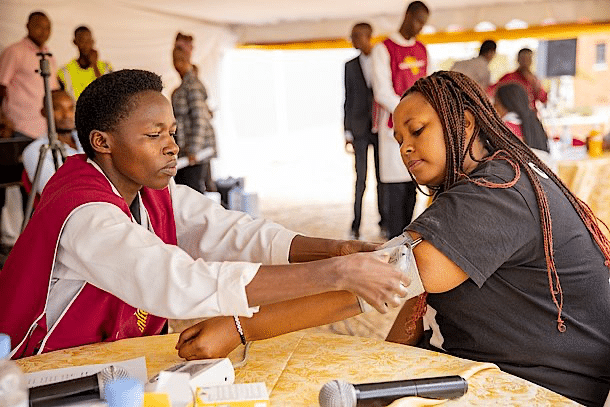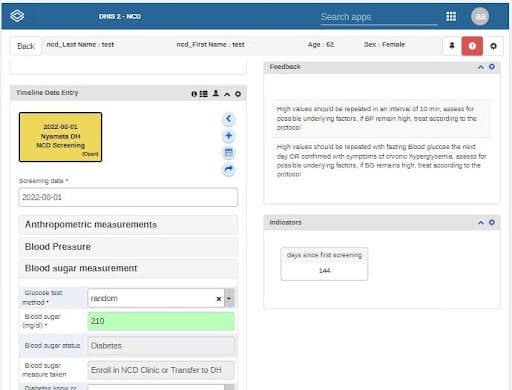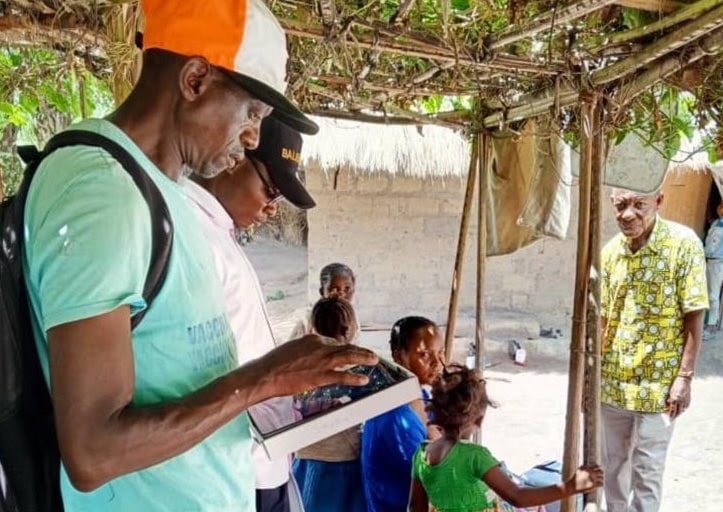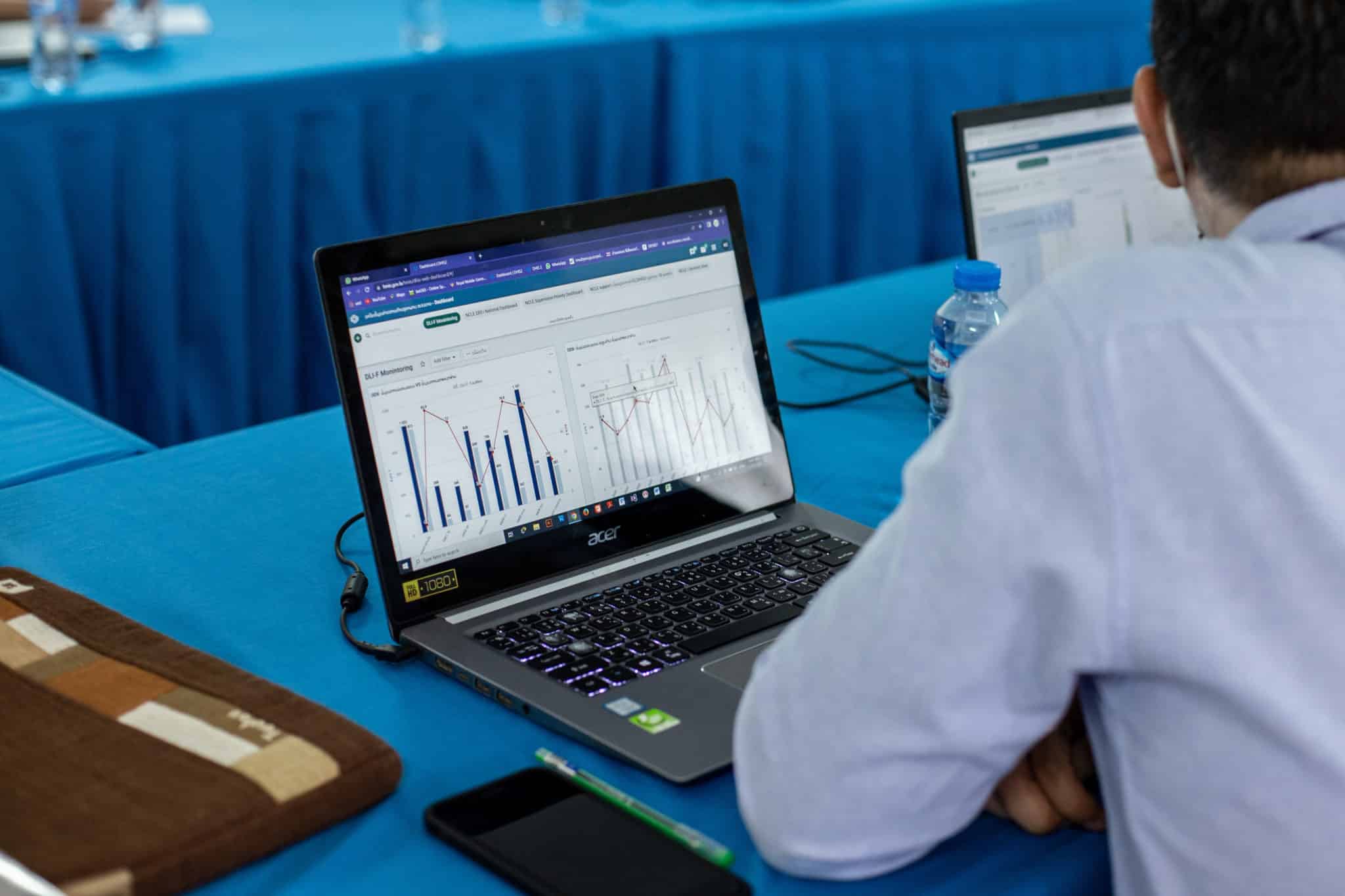
Diagnosing Noncommunicable Diseases with DHIS2 in Rwanda for Improved Treatment Access
Rwanda uses a new NCD tracker in DHIS2 to identify patients and enroll them in treatment, increasing the screening rate of the target population from only 30% to more than 91% in the first two years.
Noncommunicable diseases (NCDs) are a major health problem in Rwanda, according to a 2023 World Health Organization (WHO) report which cites cardiovascular disease, chronic respiratory disease, cancer, and diabetes as significant contributors to mortality for both men and women. A key hurdle for medical providers in Rwanda is identifying patients in time to treat them — national health data indicates that only 12% of patients living with NCDs were diagnosed and receiving treatment in early 2022, and existing screening data was stored primarily on paper, making it difficult to analyze and use. Additional complicating factors included limited awareness in the population about NCDs and associated risk factors; an inadequate referral system for diabetes and hypertension emergencies; ineffective community screening and follow-up; and limited equipment, staff, and infrastructure.
To combat NCDs in Rwanda, the Ministry of Health and the Rwanda Biomedical Centre (RBC), with support from the Defeat-NCD Partnership and the United Nations Institute for Training and Research, have created a five-year strategy for NCD prevention and control, and have been working toward a targeted 25% reduction in premature mortality caused by NCDs by the year 2025. Rwanda’s NCD program aims to coordinate prevention, early detection, diagnosis, treatment and rehabilitative interventions in the country to reduce the incidence and impacts of NCDs. A central part of this effort is scaling up screenings for diseases like hypertension and diabetes. Since July 2022, health officials have been conducting these screenings via a new DHIS2 NCD tracker tool, which was created by HISP Rwanda in collaboration with the RBC. The tool has proven very successful, enabling a huge increase in NCD screenings for the target population, from a base rate of only 30% to more than 91% in the first two years of use.
“The DHIS2 tracker has revolutionized our approach to noncommunicable disease prevention and control. Its data integration identifies at-risk individuals swiftly. Moreover, we’re establishing community NCD profiles for early detection and seamless linkage to care. This technology is driving impactful improvements in health outcomes.”
– Simon Pierre Niyonsenga, Program Director for Non-Communicable Diseases, Diabetes, Renal, Respiratory and Other Metabolic Diseases, RBC
HISP Rwanda develops NCD tool to enable enhanced screenings
As part of its five-year strategy, Rwanda’s health officials are implementing new, enhanced NCD screenings for all eligible patients in specific age groups (women over age 35, men over age 40). These screenings can be conducted either by clinic workers or by medical outreach teams, and will be updated at community check-ups each year.

To support these screenings and promote referrals for patient treatment and follow-up, HISP Rwanda, in coordination with the RBC, created a new NCD tracker tool in DHIS2. Work on the new tool began in September 2021 and was completed three months later before being introduced and used in a limited capacity from January until June 2022. The tool was then rolled out for full use nationwide in July of that year, and remains in use for regular health outreach campaigns.
The NCD tracker tool introduces new functionality to health workers in Rwanda, as it integrates data from multiple sources, including the country’s national population registry and facility registry — an important feature that allows screeners to quickly auto-populate new patient profiles using only the patient’s national ID number. As clinicians then add each patient’s relevant medical data and measurements — such as height, weight, blood pressure, and blood sugar — through the DHIS2 Capture app on tablets, the tool automatically screens for hypertension, diabetes, and obesity using preprogrammed diagnostic criteria, and then displays any identified diagnoses and the recommended actions based on existing NCD protocols established by the RBC. For positive diagnoses of hypertension or diabetes specifically, patients are directed to a health facility for confirmation and treatment.
In addition to this functionality, the NCD tool features a dashboard for each tracked disease, which allows health officials to see data related to screenings and treatment in each district.
NCD tracker tool improving patient follow-up and data quality
The NCD tracker tool has already proven helpful for health workers in Rwanda. By simplifying the data-entry process and automatically providing diagnostic results and suggested actions based on patient data, it eliminates or minimizes many kinds of errors. Similarly, the tool streamlines follow-up care and referrals for any positive cases, ultimately resulting in wider diagnosis and treatment of NCDs in Rwanda.

Rwandan health authorities have set screening targets as a means of measuring effectiveness, and the NCD tracker recorded more than 2.9 million total enrollments for the 2021-2022 fiscal year. In the 2022-2023 fiscal year, health workers recorded an additional 2.5 million screenings, which is 91% of the target population, surpassing the original goal of 85%. Additionally, because patients are identified by a unique ID number, authorities can avoid the costs associated with unintentionally screening some individuals multiple times within a short period, and can more effectively follow individual patients and community cohorts over time.
The total number of patients diagnosed with diabetes or hypertension in Rwanda has increased dramatically, from 89,925 in 2020 to 130,662 in 2023. This trend could be attributed to improved screening and diagnosis using DHIS2 at the community level, but it also highlights the need for continued and robust screening to identify and treat those who remain undiagnosed. In the future, HISP Rwanda hopes to expand the use of its NCD tracker tool to improve routine NCD surveillance data, to integrate with solutions for at-home monitoring of blood pressure or blood glucose levels, and to integrate with medical records systems.
This article is based on a post by HISP Rwanda on the DHIS2 Community of Practice.

